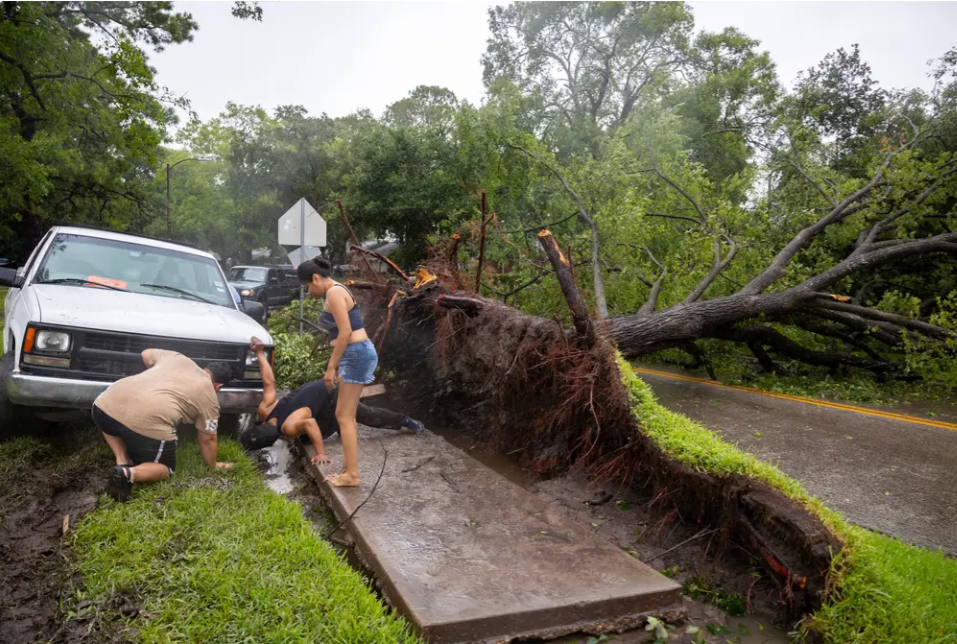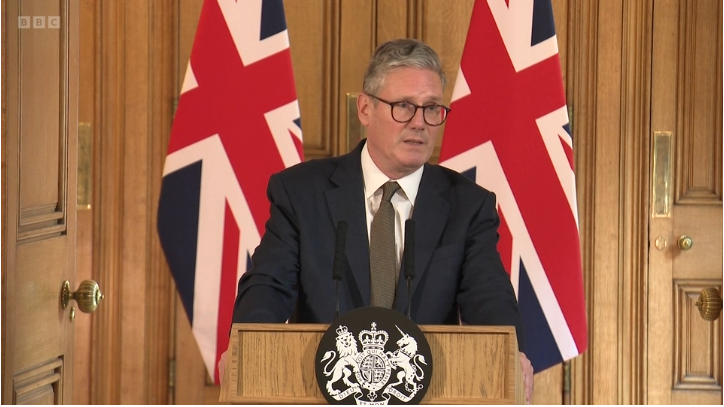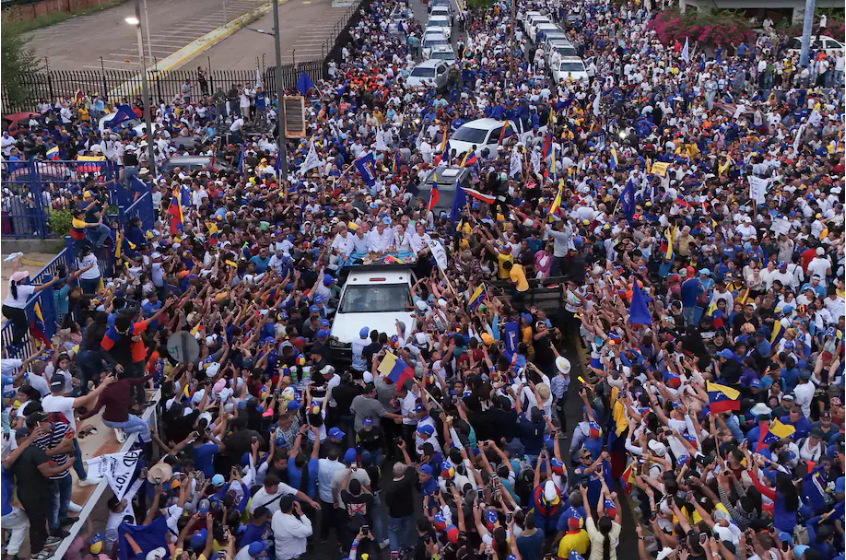Across the Gulf Coast, fences toppled, awnings ripped, business signs soared away and traffic lights twisted askew.
:quality(75)/https://static.texastribune.org/media/files/fb255c875750aec3d74de0241c09a99f/0708%20Beryl%20Houston%20AM%2030.jpg)
Sign up for The Brief, The Texas Tribune’s daily newsletter that keeps readers up to speed on the most essential Texas news.
HOUSTON — When Tenille London saw her street filling with water on Monday morning, she decided to go back to bed, close her eyes and pretend it was a dream.
Any minute, she thought, her car would float away.
Instead, a tree limb fell on it — shattering and punching a hole through the back window.
“Just my luck,” London said Monday afternoon as she surveyed the damage in her neighborhood.
London, 42, knows hurricanes come with the territory of living in this sprawling city on the Gulf Coast — a place subjected to so many recent storms and hurricanes that one can lose count.
She was thankful the storm wasn’t worse than it was.
:quality(75)/https://static.texastribune.org/media/files/c903b65e0c3b26004d80078eacd2ed6d/0708%20Beryl%20Houston%20AM%2024.jpg)
Hurricane Beryl plowed through the Houston region as a Category 1 storm — killing at least three people, taking out power at some 2.7 million Texas homes and, according to local meteorologist Matt Lanza, keeping up hurricane strength until it got halfway across town. Only in the afternoon would the winds die down completely, allowing people to emerge to follow a routine many know well: assess the damage, check on others, clean up and wait for the power to return.
But first, they hunkered down.
Already, Hurricane Beryl had plowed across the Caribbean, becoming the only recorded Category 4 storm to form in June and leaving a trail of destruction across Caribbean islands. It crossed the Yucatan Peninsula and forecasters thought it aimed for South Texas. But its projected path moved north as its final landfall neared and officials realized Houston would bear the brunt of its “dirty side” — the east side of the storm that would pack a punch with heavy rain and wind.
:quality(70)/https://static.texastribune.org/media/files/b2e67e099eddc2db46a70df8df996f83/0708%20Beryl%20Houston%20AM%2018.jpg)
State and local officials urged Houston area residents to stay off the roads and prepare for flooding and power outages. Edwin Acevedo, a 36-year-old plastic surgery fellow from New Jersey, prepared by filling up on gas and buying water and supplies.
New England had snowstorms. Now Acevedo would face his first hurricane: “There’s something everywhere,” he said. “You need to just kind of prepare accordingly.”
Some Houstonians would go after the storm to haul water and ice from grocery stores. One off-duty nurse checked out with Cheetos and goldfish. Others would wait in lines at Pollo Campero or Burger King. Still more would line up at gas stations.
Beryl strengthened and made landfall by 4 a.m. near Matagorda, a town 100 miles southwest of Houston. The storm jolted people awake as its winds roared, blowing at 90 miles per hour, pushing tree branches at windows and ripping shingles from rooftops. Ten to 15 inches of rain pounded homes, according to Houston Mayor John Whitmire.
The wind sounded to 31-year-old Elizabeth Alvarez in Houston like someone screaming. The mother of six woke up at 4 a.m., scared, and didn’t go back to sleep. She thought her window might break. She lost power and — hour by hour — more Houstonians did too, their air conditioning and refrigerated food going along with it.
:quality(70)/https://static.texastribune.org/media/files/47da32590d68c8add31bc3e81ea72013/0708%20Beryl%20Houston%20AM%2032.jpg)
Later, Alvarez would drag her pet birds in their cages onto her porch to feel the cooler air, while neighbors grilled corn and pork and others kicked a soccer ball. She would clutch a handheld, battery-powered fan, that was turned off to save for when she needed it.
Across the region, fences toppled. Awnings ripped from restaurants. Signs soared away from businesses. Traffic lights twisted askew. A local television station lost power and went off the air. Lt. Gov. Dan Patrick said on The Weather Channel, “Really, Houston is getting the brunt of the wind and the rain.”



